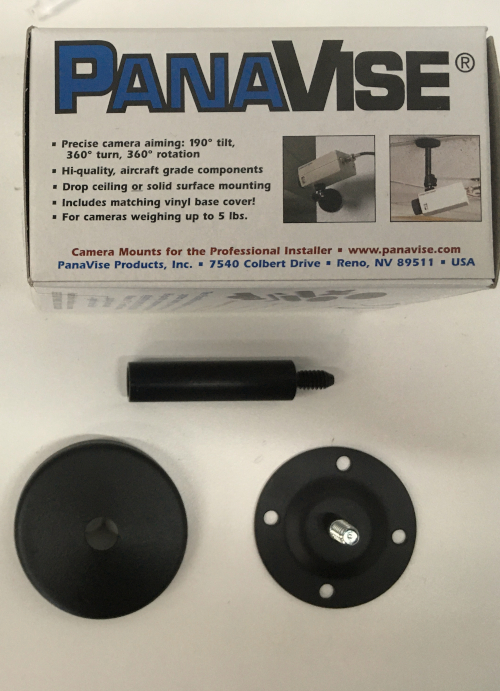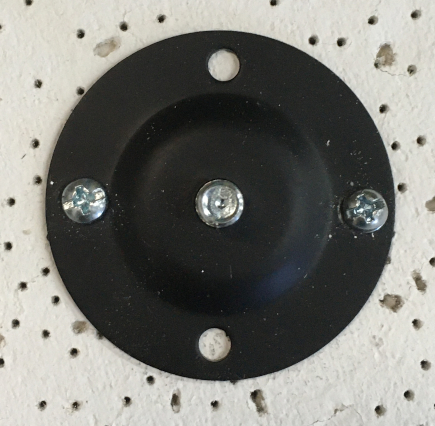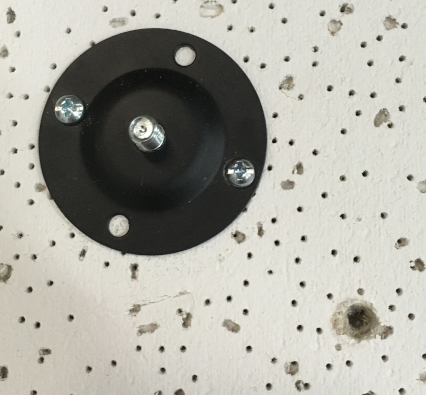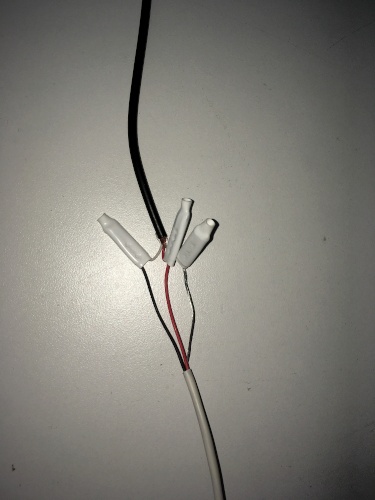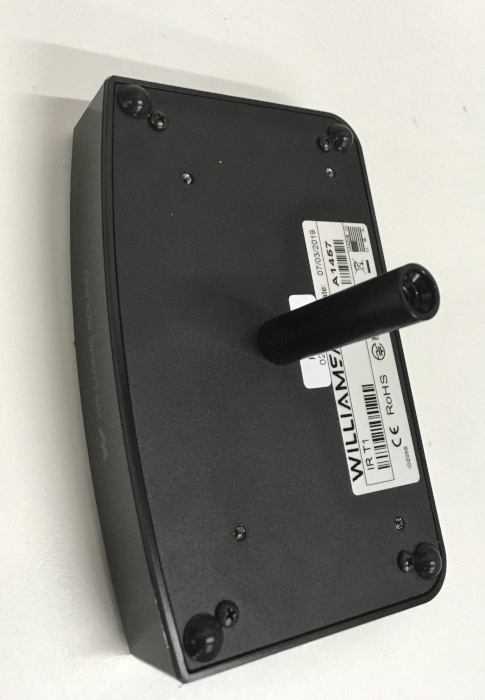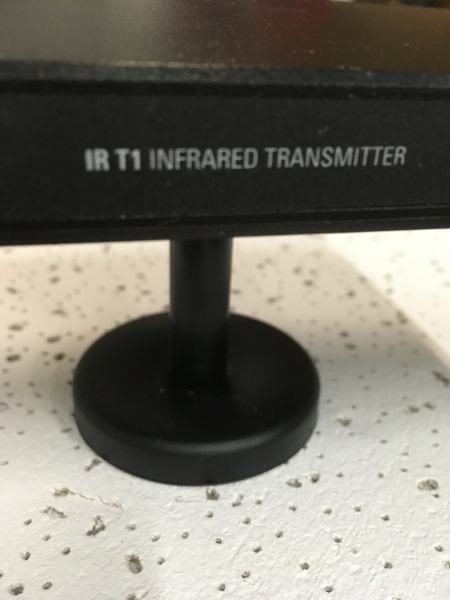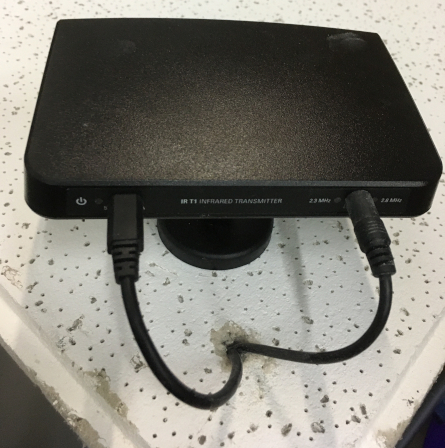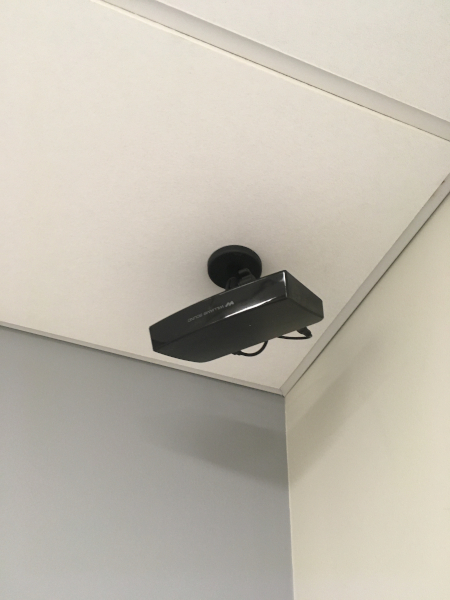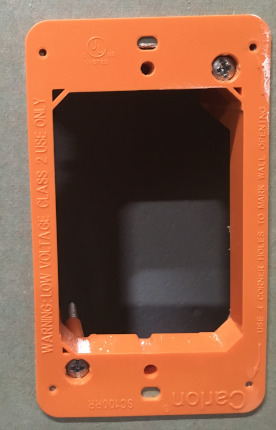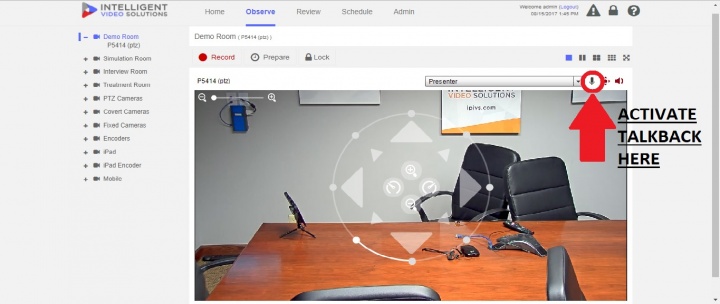Difference between revisions of "Infrared (IR) Talkback"
IVSWikiBlue (talk | contribs) (→Testing the System) |
IVSWikiBlue (talk | contribs) |
||
| (One intermediate revision by the same user not shown) | |||
| Line 1: | Line 1: | ||
| − | [[File:WilliamsIRT1Specifications.jpg|link=https://ipivs. | + | [[File:WilliamsIRT1Specifications.jpg|link=https://ipivs.info/wiki/images/8/8e/WilliamsIRT1Specifications.jpg]] |
==Required Parts and Tools== | ==Required Parts and Tools== | ||
Latest revision as of 11:37, 29 August 2024
Contents
Required Parts and Tools
- Williams Talkback System IR T1
- Williams RX224 Receiver
- PanaVise Deluxe CCTV Camera Mount
- POE Splitter
- RDL 24V DC power supply
- 22/2 audio cable
- 18/2 low voltage cable
- Low voltage pass through plate
- B Connectors
- Fish Tape or Glow Rods
- Electrical Tape
- Wire Stripper
Installation Instructions
Connecting to the Camera
- Once the camera is installed, locate the AUDIO OUT on your camera
- Strip the jacket of the 22/2 cable revealing the red, black, and bare wires inside.
- Cut away the bare wire and plastic surround the cable inside. Strip away a small piece of the red and black jackets revealing the bare copper wire.
- Wire the black and ground to the - and the red to the + of the AUDIO OUT of phoenix connector or splice to 3.5mm with B-Connectors d.
IR Device mounting Instructions
- Determine the placement of the IR receiver. It will generally be best suited to be positioned in a corner.
- Remove the drop ceiling tile to which the IR receiver will be mounted
- Note: The IR receiver will be mounted as far back to the corner as space allows
- Remove the mounting hardware from its packaging (necessary mounting hardware shown below)
- Using toggle bolts, secure the mounting plate to the drop ceiling
- Drill a small hole behind where the IR transmitter will be mounted for passing cables through
- Run 22/2 cable to the IR T1.
- Strip about an inch of white jacket off the 22/2, as well as about 1/2 inch of the colored jackets to expose the wire.
- Cut a 3.5mm audio cable (approx 12") and strip the jackets to expose the wires
- Splice the 3.5mm audio cable with the 22/2 with B-connectors.
- Cover your splice with electrical tape.
- Attach mount arm the IR reciever
- Place the mount cover over the plate and twist the mounting arm until secure
- Plug the 3.5 cable into the Line In of the IR T1 and connect the power cable
- Return the ceiling tile to it's appropriate location
- Once audio is plugged in, locate your nearest power outlet to power the IR T1.
- Note: The IR transmitter is powered by a standard 5v USB phone style charger that needs a regular wall outlet, or a connection to a POE line with a POE splitter to power it.
POE Splitter
- Locate the network drop above the ceiling. Determine the best location to mount the POE splitter in relation to the IR receiver.
- Mount the POE splitter
- If there is power above the ceiling within five feet of the mount location, connect the POE splitter to power
- If there is not power above the ceiling, locate the nearest and most appropriate location to run a line for power.
- Cut a length of 18/2 long enough to reach from the POE splitter to the power outlet.
- Cut a small hole above the ceiling near the POE splitter for the 18/2 to pass through
- Using a stud finder, scan the wall near the power outlet to determine the best path to run the cable.
- Cut a hole into the drywall at the same height as the power outlet and large enough to fit the mud ring into it securely
- Using fish tape or glow rods, pass the 18/2 behind the drywall
- Strip the ends of the 18/2 and splice with the RDL 24v power supply and splice with B-connectors
- Cover the cable splice with electrical tape
- Follow the same two previous steps with the power supply cable for the POE splitter
- Note: Ensure that when splicing in the 18/2 to the power, that the red jacket of the 18/2 is spliced into the cable with the dashed white lines on the power supply. The power cables will need to be tested for power continuity.
- Mount the pass through plate and place any excess cabling for the RDL 24v power supply through the plate.
Testing the System
- Ensure your IR T1 and reciever are set to the same channel.
- Test the talkback unit is working by activating the talkback function within the VALT Software and having a partner to communicate with.

